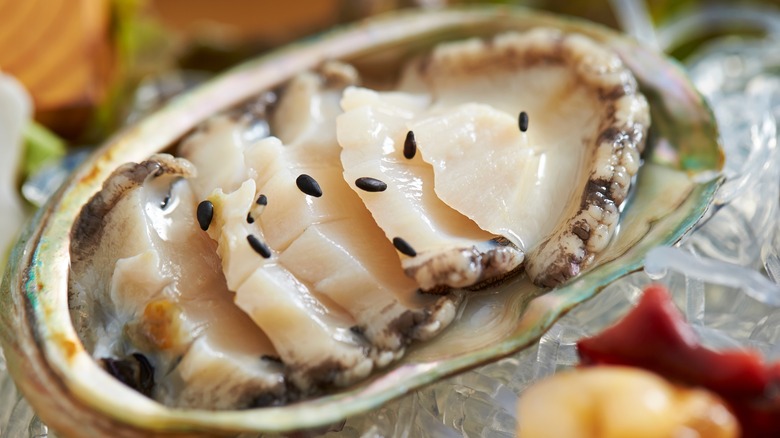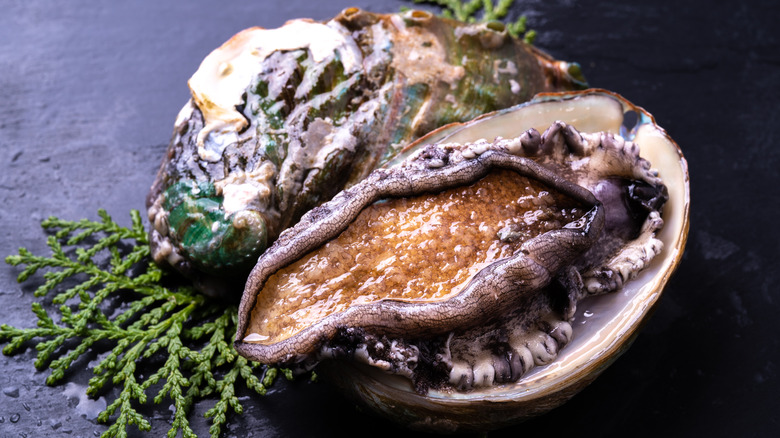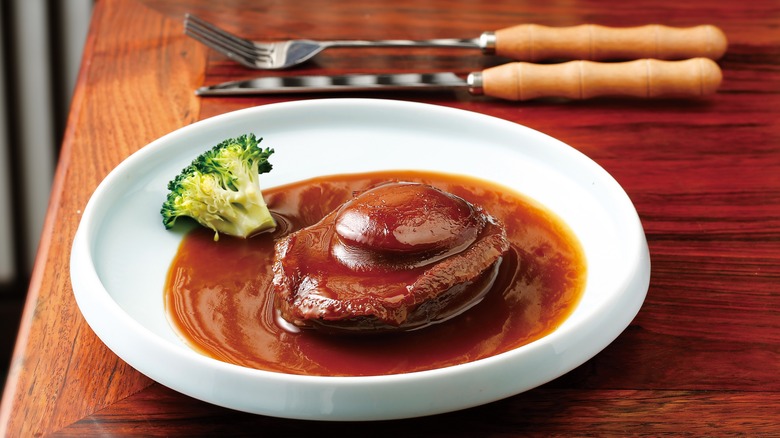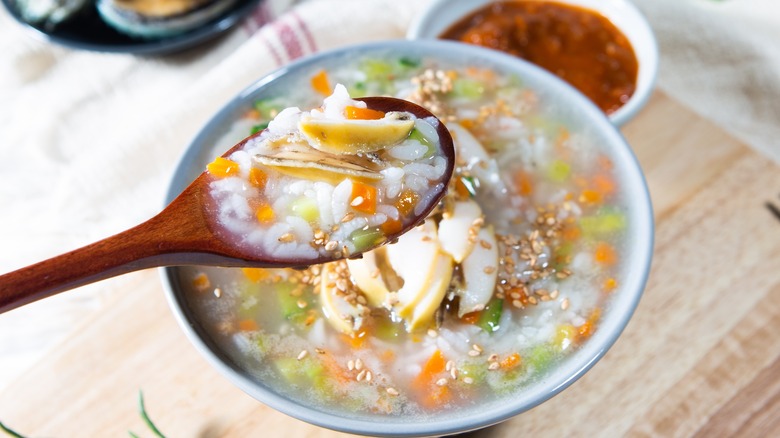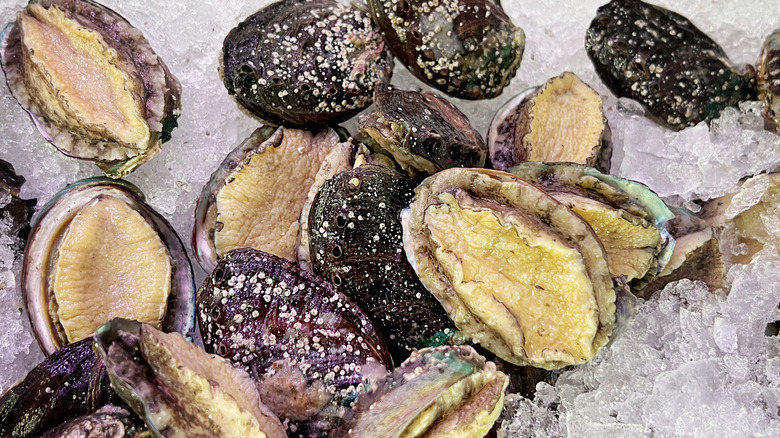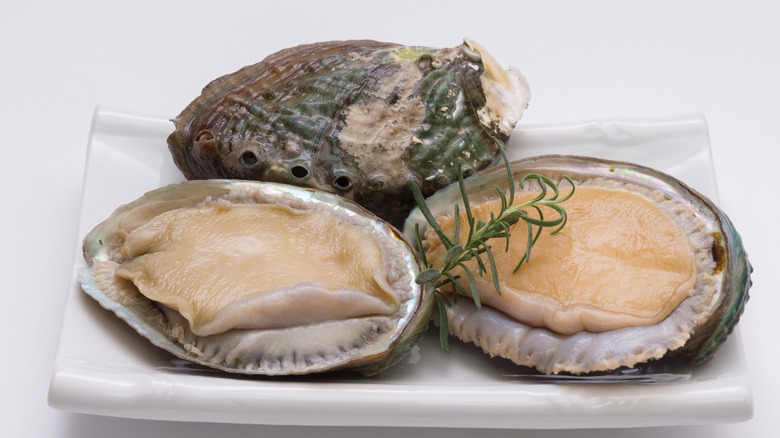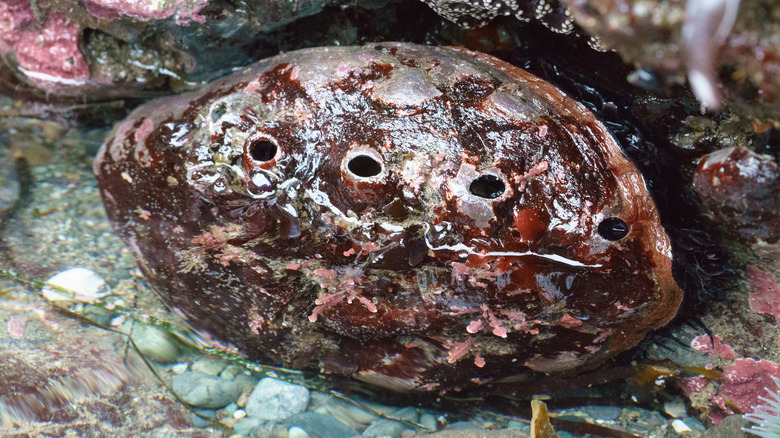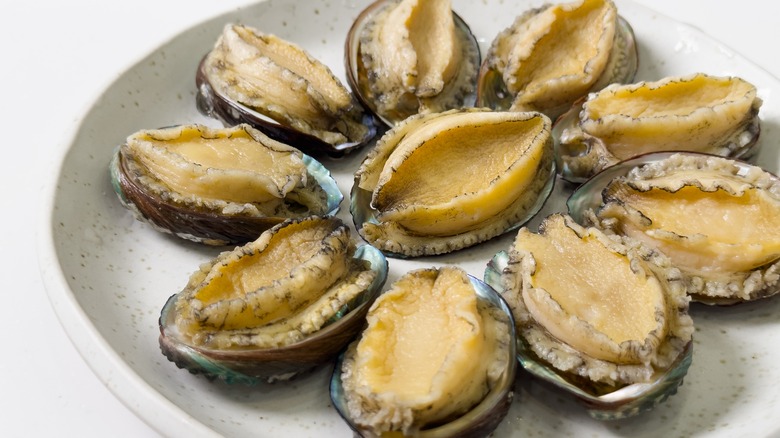What Exactly Is Abalone And How Do You Eat It?
Abalone, scientifically part of the Haliotis family of sea snails, is a marine gastropod mollusk that has earned a distinguished place in the world of seafood, revered for both its exquisite flavor and captivating appearance. This remarkable family of shellfish, of which there are about 50 different individual species, naturally inhabits warmer coastal waters around the world. These creatures thrive on rocky shorelines with underwater vegetation, such as kelp forests. They can be found along the coastlines of countries such as Australia, South Africa, Japan, and the Pacific coast of the United States. Their resilient attachment to rocks allows them to withstand strong wave action in their habitats.
Abalones span a range of sizes, contingent on factors such as their species and age. These shellfish can be as petite as a coin or as substantial as 12 inches or more in length. Their size and shape can significantly vary among species, from elongated to more rounded forms. Although you can harvest them in the wild by prying them off rocks, over 95% of abalone used in food comes from aquaculture, and some wild species are endangered – thus it is illegal to harvest them in the wild. Even so, they are prized for their lustrous shells and delicate taste.
What is abalone?
From the outside, an abalone looks kind of like a flattened snail. It has a hard and heavy shell that covers the topside of the body while the soft, fleshy side is attached to the rocks. However, when you flip it over and remove the meat, the shell exhibits an iridescent surface, commonly known as mother of pearl or nacre. Created by the microscopic layers of calcium carbonate within the shell, the inner surface of abalone shells diffracts and refracts light to produce these stunning hues.
Compared to other sea snails, abalones are distinguished by their flat shells and their attachment mechanism. Whereas other sea snails — such as the whelk — have pointy spiral shells, abalone shells are flat spirals, with holes on the side to facilitate reproduction and waste disposal. Furthermore, while many species of sea snails move about, abalones are mostly stationary, attaching themselves to coastal rocks for most of their lives. This hearty mollusk is so delicious that it has been hunted to the brink of extinction, which is why sustainable abalone farms have become the norm for the meat you find in grocery stores.
What does abalone taste like?
The taste of abalone changes depending on whether you are purchasing them raw or dried. When you are tasting it straight out of the shell, abalone can be served sliced thin sashimi style. It has a very hard and dense texture, and like many seafood, it has a briny and sweet flavor common to shellfish when eaten raw. It could be the perfect companion for Takazawa-style sashimi. The younger the abalone, the milder the flavor.
Fresh or frozen abalone can also be served steamed, usually dressed with soy sauce, scallions, and ginger. In Korea, one of the most notable ways to prepare abalone is to make a rice porridge, called jeonbokjuk. The mollusk is chopped up and slowly cooked with rice, spices, and vegetables until softened. The taste is strongly of the sea — but tempered and softened by the aromatics it simmers with.
Meanwhile, in China, abalone is often sold dried, so they have to be slow-cooked in a complex meat-heavy stock for a very long time. When prepared this way, the flesh is soft and slightly chewy, and the flavor is a combination of briny seafood and the braising liquid, full of umami from Chinese-style dried ham. It is a very expensive delicacy and is often prepared during Chinese New Year.
How to cook with abalone
Depending on the form of abalone you can find and purchase, there are several tips to make sure you can fully enjoy this very pricey ingredient. If you have canned abalone from an Asian market, they come already cooked and braised. In this case, the best use for the mollusk is to take advantage of the sauce and use it to dress the blanched vegetable. Heat up the contents of the can to a gentle simmer, and season it with ginger, soy sauce, and oyster sauce. In a separate pan, blanch a leafy vegetable that absorbs sauces well, such as napa cabbage and bok choy. Arrange the vegetables on the platter and pour the sauce and abalone on top, and you are ready to serve.
If you can find live or fresh-frozen abalone in your local seafood market, you should savor its flavor by preparing it as simply as possible. For example, you can steam the abalone in its shell covered in garlic, ginger, chilis, and soy sauce. However, if you are planning to serve them whole, you should cut a crosshatch pattern, so the flesh can soften while steaming. Otherwise, cut the meat into thin slices, so they achieve a slightly chewy texture without becoming tough when cooked.
You can also pan-fry the abalone steak drenched in breadcrumbs or flour, and serve it with a side of horseradish. For sides, add whatever you prefer when eating scallops — risotto, salad, or a roasted veg.
Where to buy abalone
If you're wanting to get your hands on some delicious abalone, you might have to search to find it. Unfortunately, abalone is not as readily available as other shellfish such as mussels and clams, but if you're determined to find some, it shouldn't be too difficult. It is unlikely you will find them in your local grocery store, but specialty food stores or Asian supermarkets may have them, since they are often used in Chinese cuisine.
If you're having a hard time getting a hold of abalone in person, you may need to order some online. Fortunately, there are plenty of companies that can deliver straight to your door. The Cultured Abalone Farm and Big Island Abalone both deliver fresh abalone nationwide, however, if you live in California, you may not be able to receive them live, due to state regulations. Frozen abalone can be ordered, instead.
If you're looking to impress at your next dinner party by serving some of this elegant delicacy, you will need to plan in advance, as a last minute trip to the store is unlikely to be successful. With a little bit of research, however, you can be serving up an appetizer that your guests will not forget in a hurry.
Nutritional content of abalone
Like all shellfish, abalone is a standout when it comes to nutrition, and counts toward your recommended two servings of fish per week. It is high in protein, at 17 grams of protein per 100 grams of abalone, which is a similar quantity to salmon. Like salmon, it also contains some omega-3 fats, though it is not as rich in these heart-healthy oils as the bigger fish.
Abalone contains a number of vitamins and minerals that contribute to its impressive nutritional profile. It is rich in vitamin E, a potent antioxidant that boosts the health of skin, nails, and hair and may help reduce the chance of heart disease. It also contains significant amounts of selenium, iron, and phosphorus, which all play an important part in protecting your overall health.
Considering that abalone is very low in saturated fat and contains just over 100 calories per every 100 grams, it definitely deserves a place in a nutritious diet. This luxury item has the advantage of being both delectable and healthy, meaning that if you can get a hold of it, incorporating it into your diet is a must.
Varieties of abalone
Since abalone is not a particularly well known ingredient, you may be unaware that there are several varieties of this mollusk — around 100, in fact. Nine species are found in the waters around the U.S., including black, green, pink, and pinto mollusks.
The largest of all the abalone is the red abalone. Due to its rarity, it often sells for a whopping $100 dollars per inch of meat, partly because diving for red abalone is an incredibly dangerous feat. The red color comes from its diet of red algae and seaweed, giving its shell a distinctive hue. Pink abalone are another variety found in California waters. They are also known as corrugated abalone due to their crimped shell, and are one of the larger species, able to reach up to 10 inches long.
The smaller varieties of abalone include pinto and flat, as well as black and white abalone, which are now both on the endangered species list, so they are unlikely to feature in your meals any time soon. Though there are subtle differences in the flavors of the distinct varieties, the taste of abalone is so revered that you should grab the opportunity to sample some if you have the chance, no matter which sustainable variety it is.
How to store abalone
If you manage to get a hold of some prized abalone, you want to make sure that you store it properly so that you can get the most out of this wonderful ingredient. The best method of storage will depend on what form you are buying the abalone in.
The best option, if you can get it, is to buy fresh, live abalone. In this case, cook and eat it as soon as you can, though you can keep it overnight covered with a damp cloth. Do not store them in water. If you are not planning to eat the fresh abalone within 24 hours, you should shuck them and then freeze them. Shucking means removing them from the shell while keeping the whole piece of meat intact, and is similar to shucking oysters.
If you buy shucked abalone, or have shucked them yourself, you can keep them for up to two days in the coldest part of your refrigerator, but ideally you should freeze them if you don't want to eat them straight away. If you buy your abalone frozen, or decide to freeze it from fresh, wrap it in a freezer-proof bag and keep it for no more than three months. Defrost overnight in the fridge before cooking.

